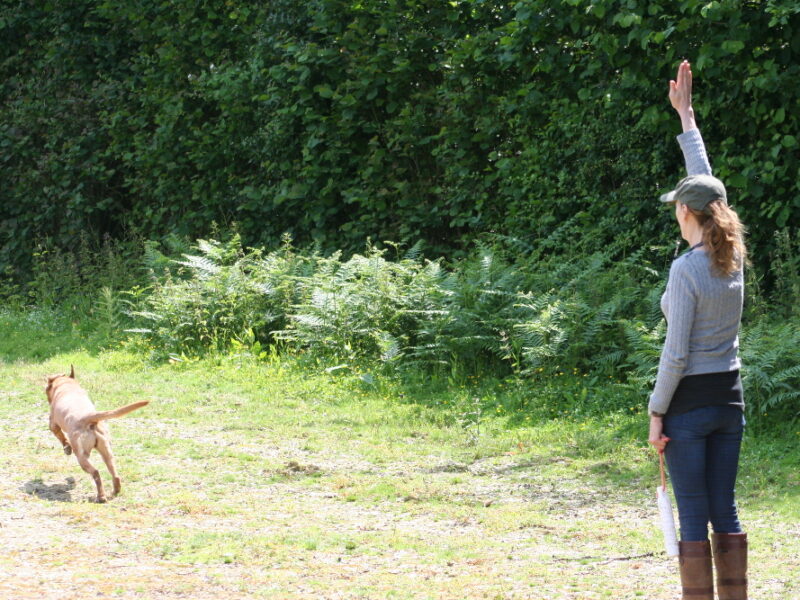BASED ON ORIGINAL MATERIAL BY PIPPA MATTINSON, UPDATED BY HEATHER JULIE CLAYTON FOR THE GUNDOG CLUB – APRIL 2022
For those working towards Grade 2 and Grade 3, this is a resource for those wanting to teach their gundogs to handle at a distance.
In a previous article, we covered the types of retrieve, and the key training processes required – this article looks in more depth at one of those areas, casting. Casting is the second of four key blind retrieving skills (lining, casting, stopping and hunting).
The act of casting a dog simply means sending your dog in the direction of your choice when he is at a distance from you.
The four casts
To have some basic control over where a gundog travels, there are four different directional casts that we need our gun dogs to learn.
- The back cast (with options to teach the dog to rotate left or right)
- The left hand cast
- The right hand cast
- The recall
The back cast
The back cast tells the dog to travel away from the handler, in the direction that the handler is facing.
The standard cue for a back cast varies. In the USA it tends to be a raised arm. In the UK it was traditionally a raised arm accompanied by a forward movement of the arm or hand, to differentiate it from the stop cue.
What you choose to use is up to you, some people just use a raised arm and don’t use a raised arm as a stop cue. Whatever you choose, make sure it is clear.
Left and right
Having a dog that move away from you is all very well, but sometimes we’ll want to move the dog to our left or right. And this is what the left and right hand casts are for.
Dogs often prefer to travel left and right rather than away, and for this reason it is a good idea not to practice lefts and rights for a while, when you first introduce the back cast – we’ll look at this in more detail later.
The recall
The fourth and most important cast, is the recall. If you can do nothing else with your dog, you need to be able to bring him towards you!
When we use the recall as a cast, just to bring the dog towards us a little, rather than all the way home, we often use a softer, more ‘muted’ version of the recall signal, but again it doesn’t matter what cue you choose so long as it is clear.
Successful training
Casting needs to be taught at close quarters and broken down into easy stages.
You need to ensure that the dog is well motivated, and well reinforced for the right behaviour. You need to build up your training carefully especially when it comes to increasing both the distance between the dog and the retrieve, and the distance between you and the dog.
Start simple and work up
The dog needs the opportunity to learn all of the casts really well before you introduce other challenges such as fences or ditches. Don’t be tempted to introduce too much difficulty, too soon.
Give the dog plenty of chance to become really proficient at all four casts at close quarters, adding distance and difficulty slowly but surely.
The order of training
Most people teach the recall first, simply because it is such an important cue for any dog to learn. Some people then like to get the back cast really well established next, before teaching rights and lefts, simply because dogs find it harder to grasp.
Our next article looks at teaching the back cast.
About the author

Heather Julie Clayton runs the Gundog Club, on behalf of the Gundog Trust and its Trustees.
She trains retrievers – the infamous Charlie, the beautiful Betsy, and the very, very talented Beanie – at Beanie Farm in Cornwall.


 The Gundog Club grades: what’s the point?
The Gundog Club grades: what’s the point?